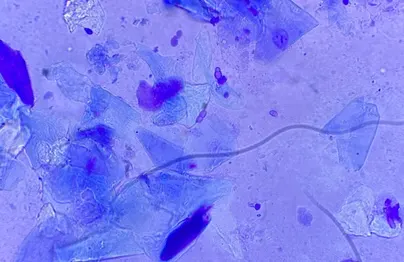
In the Literature
Lee H, Koo Y, Yun T, et al. A single-blind randomized study comparing the efficacy of fluconazole and itraconazole for the treatment of Malassezia dermatitis in client-owned dogs. Vet Dermatol. 2024. doi:10.1111/vde.13233
The Research …
Malassezia spp dermatitis is a common superficial fungal condition in dogs that is often secondary to an underlying disease (eg, allergic dermatitis, endocrinopathy).1 Treatment is typically initiated with topical and/or oral antifungal medications for pruritus and other clinical signs (eg, yeastlike odor, crusts, erythema).
This study compared the efficacy of fluconazole and itraconazole for treatment of Malassezia spp dermatitis in dogs and investigated the adverse effects of fluconazole. Client-owned dogs (n = 61) were divided into groups given 5 mg/kg fluconazole, 10 mg/kg fluconazole, or 5 mg/kg itraconazole PO every 24 hours for 28 days; 53 dogs completed the study. Clinical index scores, pruritus Visual Analog Scale scores, and mean yeast counts via cytologic examination were evaluated in all dogs on day 0, 14, and 18, and blood work analysis was performed in dogs administered fluconazole.
All dogs had similar clinical index scores, pruritus Visual Analog Scale scores, and mean yeast counts on day 0 and showed significant reductions in all 3 measurements on day 14 and 28. Percentage reduction in mean yeast count was significantly higher on day 28 compared with day 14 in the group given 5 mg/kg fluconazole; there were no other significant differences in percentage reduction among the groups. No adverse effects were noted in dogs that received fluconazole.
Must Reads From Our Newsletter:
… The Takeaways
Key pearls to put into practice:
Fluconazole and itraconazole can be safely used to treat Malassezia spp dermatitis in dogs.
Fluconazole is more cost effective than itraconazole, does not affect hormone synthesis, and does not have to be given with food.2
Fluconazole appeared to be well tolerated in dogs in this study, and administration of 5 mg/kg PO every 24 hours appeared to have similar efficacy as 10 mg/kg PO every 24 hours. Fluconazole (particularly, 5 mg/kg) given for 28 days appears to be optimal for decreased yeast counts and improved clinical signs in dogs with Malassezia spp dermatitis.
You are reading 2-Minute Takeaways, a research summary resource presented by Clinician’s Brief. Clinician’s Brief does not conduct primary research.